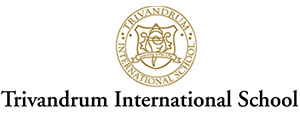The transdisciplinary approach is a modern educational method that transcends the traditional boundaries of specific disciplines. Unlike interdisciplinary or multidisciplinary approaches, which integrate multiple subjects but still treat them as separate entities, transdisciplinary learning merges them into a unified learning experience. This approach is particularly beneficial in fostering critical thinking, problem-solving, and collaboration among students as it allows them to apply knowledge from various fields to real-world scenarios.
What is a Transdisciplinary Approach?
In simple terms, a transdisciplinary approach integrates different subjects, like mathematics, science, and social studies, into one cohesive learning framework. The primary objective is to break down the walls between disciplines and focus on themes or concepts that apply across various fields. This method encourages students to see connections between subjects and understand that knowledge is not isolated to specific disciplines.
For example, when studying the theme of sustainability, students might explore mathematical models to predict environmental changes, investigate the scientific principles behind climate change, and delve into the social and economic impacts of environmental policies. All these disciplines come together to form a more comprehensive understanding of the topic.
The Importance of Transdisciplinary Learning
In an increasingly interconnected world, problems and challenges often span multiple fields of expertise. Traditional learning methods that compartmentalise subjects may limit students’ ability to solve such complex issues. The transdisciplinary approach, on the other hand, equips learners with the ability to synthesise knowledge from various disciplines, making them better prepared for future challenges. It encourages curiosity, creativity, and critical thinking, which are essential skills in today’s fast-paced, evolving environment.
Key Benefits of the Transdisciplinary Approach
- Holistic Learning Experience
The transdisciplinary approach promotes a holistic view of learning. Students do not learn subjects in isolation but understand the interconnectedness of different disciplines. This encourages them to view knowledge as a whole and see the broader implications of what they are learning. - Real-World Application
One of the most significant advantages of transdisciplinary learning is its relevance to real-life scenarios. Since problems in the real world rarely fall neatly into one subject area, this approach allows students to apply their learning to practical situations. For instance, students might work on projects that require them to use skills from science, mathematics, and literature to propose solutions to environmental issues, thereby preparing them for future professional challenges. - Development of Critical Thinking
By learning to view problems through multiple lenses, students enhance their critical thinking skills. The transdisciplinary approach encourages learners to question assumptions, analyse information from various perspectives, and synthesise diverse pieces of information into a coherent whole. - Collaboration and Communication
As students work on projects that involve multiple disciplines, they must collaborate and communicate effectively with their peers. This improves their teamwork and interpersonal skills, which are essential for success in any field.
Implementing the Transdisciplinary Approach in Schools
For educators, implementing a transdisciplinary approach requires a shift from the traditional methods of teaching. It begins by identifying key themes or concepts that naturally cross the boundaries of multiple subjects. These themes can range from global issues like climate change and poverty to more specific topics such as innovation or technology.
Once the themes are established, educators can design curriculum units that involve inquiry-based learning. This requires students to investigate these themes using knowledge from various disciplines. Teachers from different subject areas can collaborate to ensure that the activities and assessments reflect a transdisciplinary perspective.
For example, a unit on “urban development” might include topics from geography (city planning), mathematics (population growth models), and literature (urbanisation in fiction). Students would engage in group projects, discussions, and research that cover all these areas, resulting in a more comprehensive learning experience.
Challenges of the Transdisciplinary Approach
While the transdisciplinary approach offers numerous benefits, it also comes with challenges. One of the main difficulties is the need for collaboration between teachers of different disciplines. This requires time, effort, and coordination, which may be challenging in schools with limited resources or rigid schedules.
Additionally, assessing students in a transdisciplinary setting can be complex. Traditional exams may not accurately reflect a student’s understanding of integrated themes. Instead, educators might need to use more flexible assessment methods, such as project-based assessments or portfolios.
The transdisciplinary approach is a powerful educational tool that prepares students for the complexities of the real world. By merging different disciplines into one cohesive learning experience, this method fosters critical thinking, creativity, and problem-solving skills. Although it presents some challenges in implementation, the benefits far outweigh the difficulties, as it equips learners with the tools they need to navigate an increasingly interconnected world.



